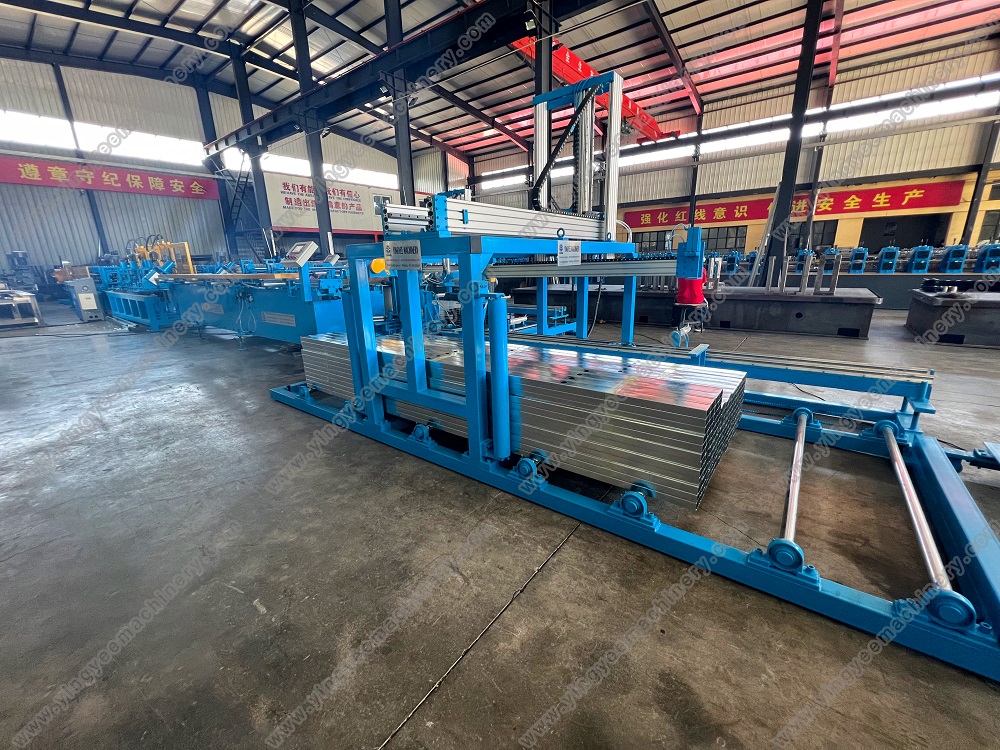
Electric Junction Cabinet Production Line A Comprehensive Overview
In the modern industrial landscape, the production of electric junction cabinets has become a pivotal aspect of various sectors, including energy, telecommunications, and manufacturing. The electric junction cabinet serves as a protective enclosure for electrical components, ensuring that wiring and connections are safe, organized, and insulated from external factors. The production line for these cabinets is designed to be efficient, effective, and adaptable to meet the demands of a rapidly evolving market.
Understanding Electric Junction Cabinets
Electric junction cabinets are typically used to house electrical connections, circuit breakers, and in some cases, control devices. They play an essential role in managing the flow of electricity within industrial facilities and infrastructure projects. By providing a centralized point for wiring, junction cabinets help simplify the electrical installation process while ensuring safety and compliance with regulatory standards.
Importance of a Specialized Production Line
A dedicated production line for electric junction cabinets ensures that each unit is manufactured to stringent standards of quality and safety. The production process is often automated to enhance efficiency and consistency, reducing the likelihood of human error. Key components of a specialized production line include
1. Material Selection The choice of materials is critical to the durability and effectiveness of junction cabinets. Common materials include steel, aluminum, and polycarbonate, each offering different benefits in terms of strength, weight, and resistance to environmental factors.
2. Cutting and Forming Advanced machinery is utilized for cutting and shaping the materials into the desired cabinet frame. Precision cutting technologies, such as laser cutting or CNC machining, allow for intricate designs and ensures that specifications are met accurately.
3. Welding and Assembly The assembly process involves welding or bolting together various components to create a robust structure. Automated robotic arms are often employed in welding processes to improve speed and precision, and to ensure structural integrity.

4. Surface Treatment To enhance the durability and aesthetic appeal of the cabinets, surface treatment processes such as powder coating, galvanizing, or painting are applied. These treatments protect against corrosion and environmental damage, extending the lifespan of the product.
5. Electrical Component Integration After the cabinet structure is completed, electrical components such as terminal blocks, relays, and breakers are integrated into the design. This phase demands meticulous attention to detail, as proper wiring and layout are essential for the functionality of the junction cabinet.
6. Testing and Quality Control Before final shipment, the finished junction cabinets undergo rigorous testing to ensure they meet industry standards. Quality control checks focus on aspects like electrical safety, structural robustness, and aesthetic quality. This step is crucial to mitigate any potential failures in the field.
Innovations in Production
The production line for electric junction cabinets is continuously evolving with technological advancements. Automation and Industry 4.0 principles are increasingly being integrated, allowing for the use of artificial intelligence and machine learning to optimize processes. Smart factories can monitor production efficiency in real-time and make adjustments on the fly, enhancing both productivity and quality.
Furthermore, the growing emphasis on sustainability is reshaping production practices. Eco-friendly materials and processes are being adopted to minimize environmental impact, aligning with global initiatives to create a more sustainable future.
Conclusion
The electric junction cabinet production line is an essential element in the broader context of electrical infrastructure development. As industries continue to advance and the demand for reliable electrical systems grows, the importance of specialized production lines becomes ever more profound. By leveraging technological innovations and maintaining high standards of quality and safety, manufacturers can ensure that electric junction cabinets continue to meet the needs of a diverse range of applications. This combination of efficiency, quality, and sustainability will be key to maintaining competitive advantage in the industry moving forward. As we look ahead, it is clear that the evolution of electric junction cabinet production will play a significant role in shaping the future of electrical infrastructure.